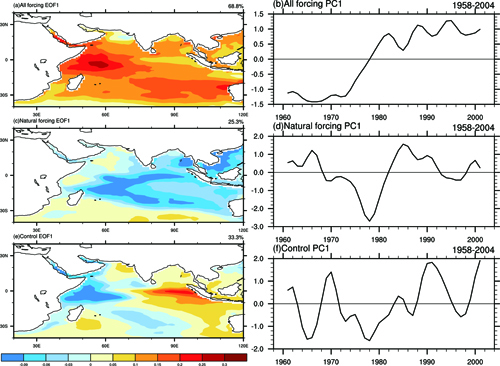[Recently Published] Indian Ocean warming during 1958-2004 simulated by a climate system model and its mechanism
Main Conclusions:
-
The observed Indian Ocean warming trend is largely attributed to the external forcing (more than 90%), while the residual is attributed to the internal variability. The anthropogenic forcing accounts for approximately 98.8% contribution of the external forcing trend.
-
Heat budget analysis shows that the surface latent heat flux due to atmosphere and surface longwave radiation, which are mainly associated with anthropogenic forcing, are in favor of the basin-wide warming trend.
-
The atmospheric processes, oceanic processes and climatological latent heat flux are together to form the equatorial positive IOD-like warming pattern, and the oceanic processes are most in favor of the zonal dipole pattern.
Citation: Dong Lu, Zhou Tianjun and Wu Bo, 2014: Indian Ocean warming during 1958-2004 simulated by a climate system model and its mechanism. Clim. Dyn., 42: 203-217, doi: 10.1007/s00382-013-1722-z
Download: http://link.springer.com/article/10.1007/s00382-013-1722-z

The anthropogenic forcing dominates the basin-wide warming trend in the Indian Ocean, while the natural forcing and internal variability nearly have no contributions.
Summary Slide Show
[video:CD-IO-Dong-Zhou-Wu]

